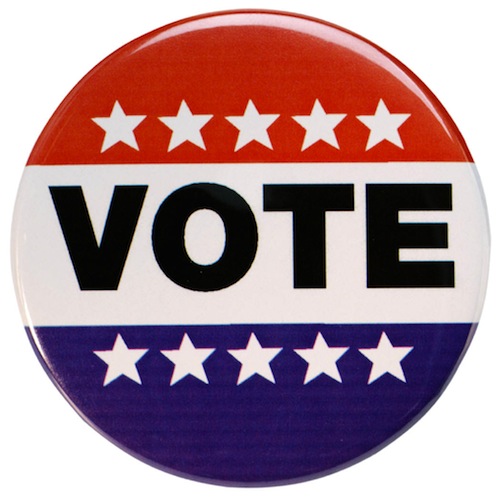Kevin Drum finds this paper, entitled “The Ballot Order Effect is Huge: Evidence from Texas”, by a professor at Sam Houston State, and notes that it confirms what we have all long believed, that being first on the ballot in a non-partisan race like a primary or a municipal election is an advantage. From the paper:
Across all twenty-four contests, the effect is invariably positive and, with two exceptions in runoff elections, statistically significant. The smallest effects are found in high-profile, high information races: the Republican primary for U.S. Senator, which featured the incumbent, John Cornyn; the governor’s race, which featured long-time Attorney General Greg Abbott; and Land Commissioner, which featured well-known political newcomer George P. Bush. In these races the ballot order effect is only one or two percentage points.
Larger estimates obtain for most “medium-profile, medium-information” races such as Comptroller, Railroad Commissioner, or the Democratic nominee for U.S. Senator. Most of these fall in a fairly tight band that ranges from three to five percentage points. Estimates are even larger in the low-profile, low-information judicial elections, generally ranging from seven to ten percentage points. Overall, the ballot order effect tends to be larger in contests that receive less attention and in which voters are likely to know less about the candidates on the ballot.
[…]
In an ironic twist of fate, we were recently able to [test our hypothesis] with the March, 2016 Texas Republican primary, held just after the first draft of this paper was completed. Featuring a highly visible Presidential race, it drew twice as many voters as in 2014—and had contests for three Supreme Court positions, one of which was between Paul Green and Rick Green, two men with common first names and identical last names. It was The Perfect Storm, and our logic implies that this should lead to large ballot order effects. This is immediately evident in the histogram of county vote shares presented in Figure 2(a), without even looking at ballot order: in a race won with 52.1% of the statewide vote, virtually no county’s vote was nearly evenly split. Instead Paul Green’s vote shares are bifurcated into two clusters, one around 40%, and another around 60%, suggesting a ballot order effect approaching twenty percentage points. The regression results in Figure 2(c) confirm this: the coefficient estimate is 19.4 percentage points. We have never seen a ballot order effect this large, and may never again.
Drum concludes that randomizing ballot order for each voter, which is something that is certainly feasible with electronic voting machines, is the best answer to this. I’ve been on that hobby horse for a long time, so it’s nice to have some empirical evidence in my corner, but in the absence of a new law from the Lege, nothing will change. But we persist in highlighting the problem, in the hope that some day our cries will be heard.
I should note that while the first-on-the-ballot effect is largest in low-information races like judicial primaries and executive offices like Railroad Commissioner, some races defy that effect. I will always cite the three-way Democratic primary for RRC in 2008, between gentlemen with basic, simple names, as Exhibit A for counterexamples. Mark Thompson, who nearly won the race on the first go, basically carried every county regardless of where he was on the ballot. Here’s Harris County:
Dale Henry 85,153 32.00%
Art Hall 69,377 26.07%
Mark Thompson 111,598 41.93%
Art Hall 37,444 30.87%
Mark Thompson 57,909 47.74%
Dale Henry 25,959 21.40%
Art Hall 45,670 24.84%
Dale Henry 57,234 31.13%
Mark Thompson 80,980 44.04%
Three different orders, Mark Thompson was second or third on all three, and yet he easily led in all three counties, despite being a first time candidate with no money. Henry had been the Democratic nominee for Railroad Commissioner in 2006, and Hall had been a City Council member in San Antonio (Hall did carry Bexar County, though Thompson came in second), yet Thompson overcame it all and ran away with the nomination. Till the day I die, I will never understand that result.

